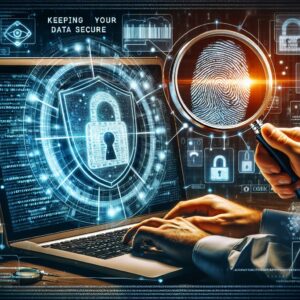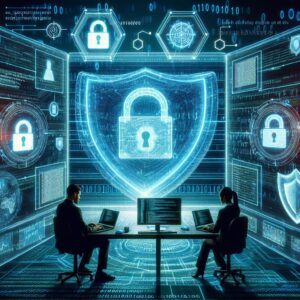In today’s digital age, where everything from our personal information to our bank accounts is stored online, cyber security has become more important than ever. With cyber attacks on the rise, it’s crucial for individuals and businesses alike to understand the basics of cyber security and computer forensics in order to protect themselves from potential threats.
Introduction to Cyber Security
Cyber security is the practice of protecting computers, servers, mobile devices, networks, and data from malicious attacks. These attacks can come in many forms, such as viruses, malware, ransomware, phishing scams, and more. By implementing strong security measures, you can safeguard your digital assets and maintain the confidentiality, integrity, and availability of your data.
One of the key principles of cyber security is to implement a multi-layered approach to protection. This means using a combination of tools, techniques, and best practices to defend against various threats. Some common security measures include using firewalls, antivirus software, encryption, strong passwords, and regular software updates.
The Role of Computer Forensics
Computer forensics, on the other hand, is the process of investigating and analyzing digital devices and data to gather evidence for legal purposes. This can be useful in cases of cyber crimes, data breaches, employee misconduct, and more. Computer forensics experts use specialized tools and techniques to identify, preserve, extract, and analyze digital evidence in a forensically sound manner.
One of the key goals of computer forensics is to establish a chain of custody for the evidence, ensuring that it can be presented in a court of law. This involves documenting the entire investigation process, from the initial acquisition of the evidence to the final reporting of findings. By following best practices and industry standards, computer forensics experts can ensure the integrity and admissibility of the evidence in legal proceedings.
Best Practices for Cyber Security and Computer Forensics
When it comes to protecting your digital assets and conducting forensic investigations, there are several best practices that you should follow:
-
Regularly Update Your Software: Make sure to install updates and patches for your operating system, applications, and security tools to protect against known vulnerabilities.
-
Use Strong Passwords: Choose complex passwords that are hard to guess and enable two-factor authentication for an added layer of security.
-
Backup Your Data: Regularly backup your data to an external hard drive or cloud storage to prevent data loss in case of a cyber attack.
-
Limit Access to Sensitive Information: Only grant access to sensitive data to authorized users and monitor for any unauthorized access.
-
Train Your Employees: Educate your employees on cyber security best practices and how to identify and report any suspicious activity.
By following these best practices, you can better protect your digital assets and be prepared in case of a cyber attack or forensic investigation.
Conclusion
In conclusion, cyber security and computer forensics play vital roles in safeguarding our digital world. By implementing strong security measures, regularly updating software, and following best practices, you can protect yourself from potential threats and ensure the integrity of your data. If you ever find yourself in need of a forensic investigation, make sure to work with certified computer forensics experts who can help you gather and analyze digital evidence in a legally defensible manner. With a proactive approach to cyber security and computer forensics, you can stay one step ahead of cyber threats and protect your digital assets effectively. Stay safe, stay secure!




